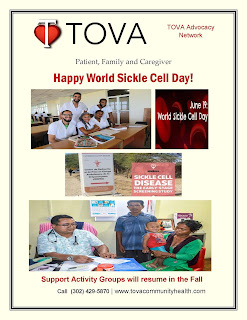 According to the World Health Organization, most sickle cell affected children born in low-income countries still die undiagnosed, usually from malaria, but things are changing. About 40% of Africa is now urbanised, and improved access to health care is leading to increased survival and rising demand for tertiary hospital services. Though, Community-based services including information, prophylactic antimalarials or antibiotics, and social support greatly improve survival and quality of life and reduce demand for acute hospital services – in short, it is less costly to make organized care available than not. If average survival reaches only half the African norm, over six million Africans will be living with a sickle cell disorder (not counting sickle cell trait) – clearly, care for these disorders must become part of primary care wherever they are common. These statistics do not include Asian countries where community-based preventative services are increasing survival as well.
According to the World Health Organization, most sickle cell affected children born in low-income countries still die undiagnosed, usually from malaria, but things are changing. About 40% of Africa is now urbanised, and improved access to health care is leading to increased survival and rising demand for tertiary hospital services. Though, Community-based services including information, prophylactic antimalarials or antibiotics, and social support greatly improve survival and quality of life and reduce demand for acute hospital services – in short, it is less costly to make organized care available than not. If average survival reaches only half the African norm, over six million Africans will be living with a sickle cell disorder (not counting sickle cell trait) – clearly, care for these disorders must become part of primary care wherever they are common. These statistics do not include Asian countries where community-based preventative services are increasing survival as well. TOVA Community Health
Primary Specialty Care
www.tovacommunityhealth.org
(302) 429-5870 ext. 120






